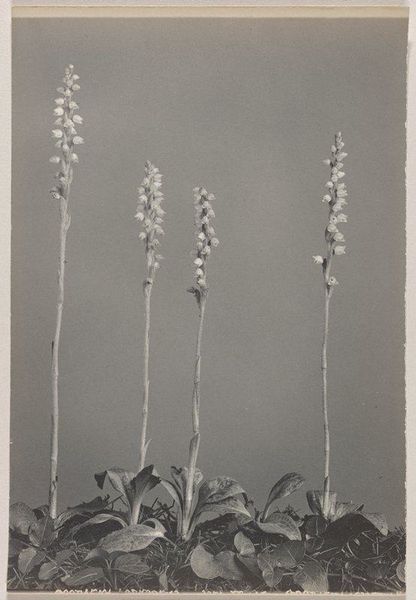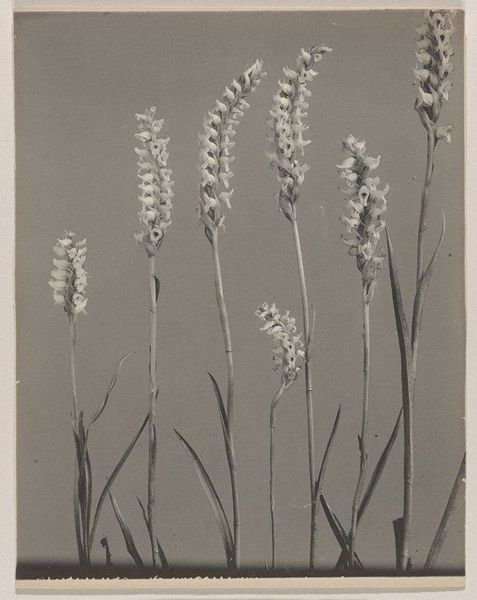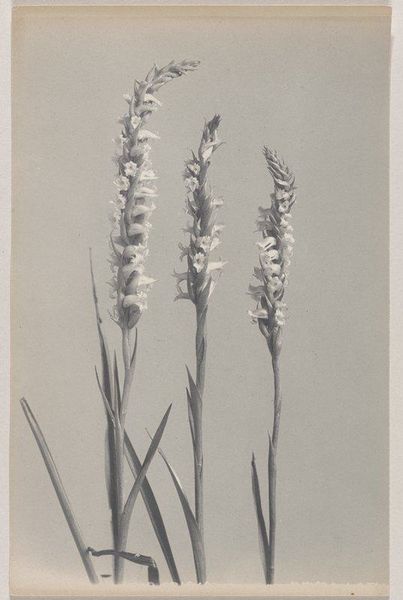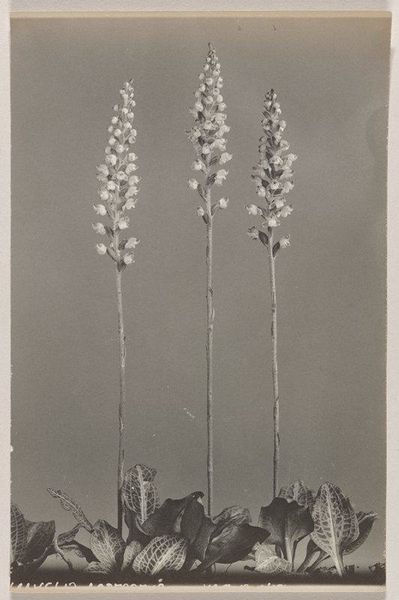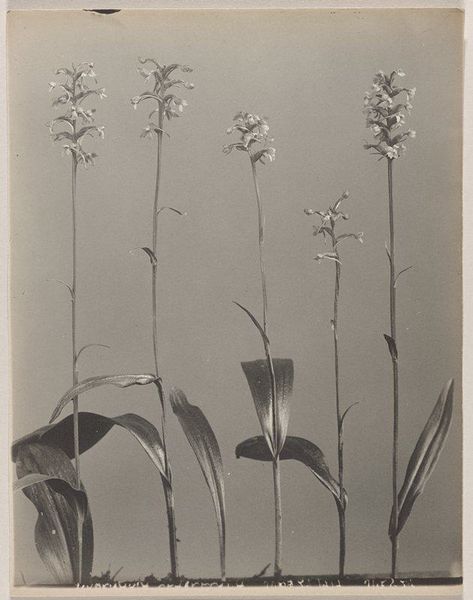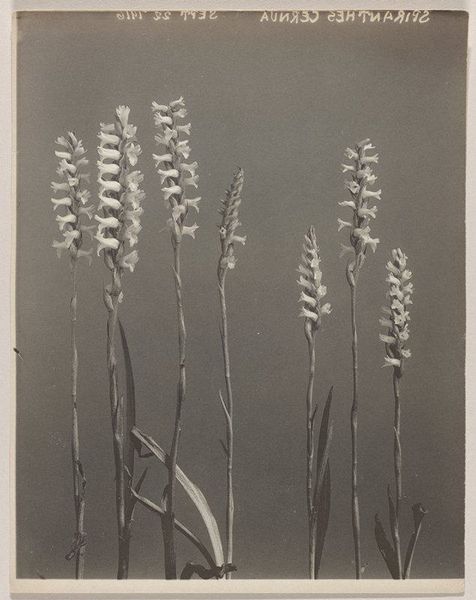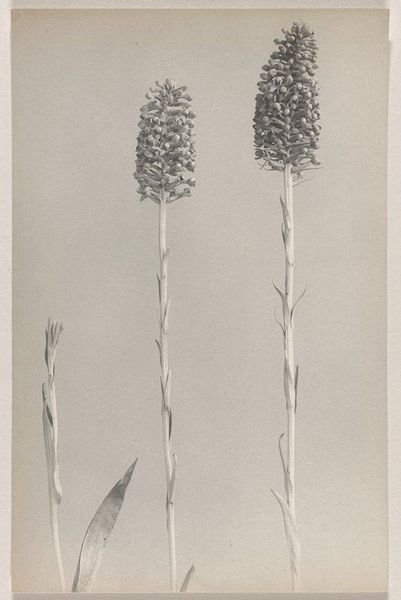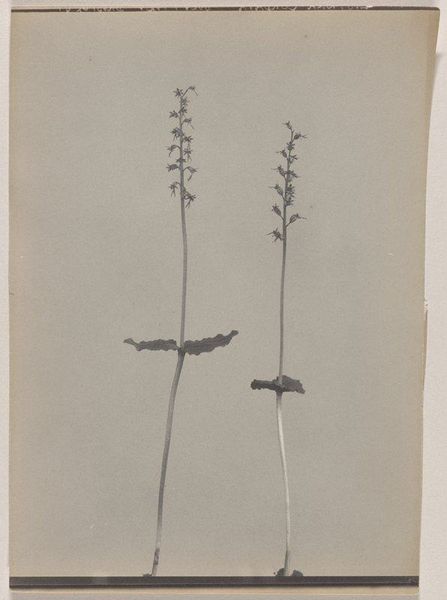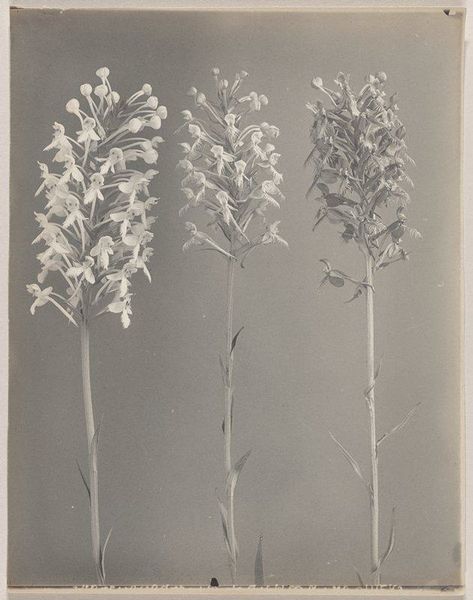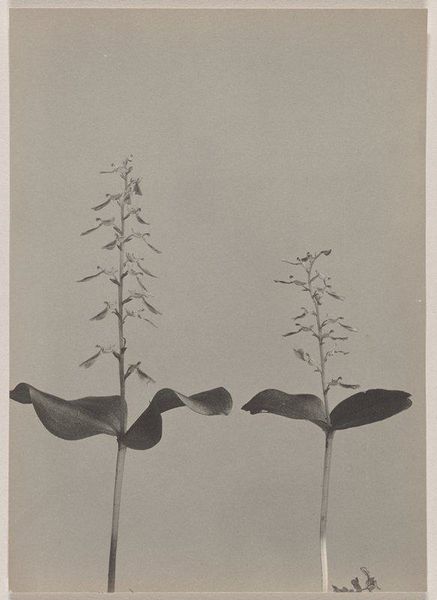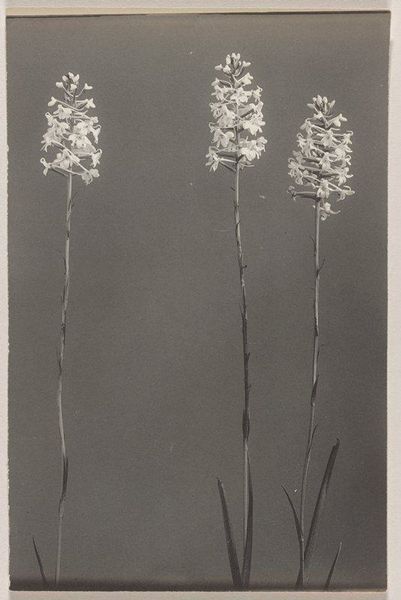
photography
#
photography
#
realism
Dimensions: 9 11/16 x 7 11/16 in. (24.61 x 19.53 cm) (image)9 15/16 x 7 11/16 in. (25.24 x 19.53 cm) (sheet)
Copyright: No Copyright - United States
Curator: At first glance, Edwin Hale Lincoln's 1931 photograph, "Spiranthes Beckii- Little Ladies' Tresses," strikes me as almost spectral. There’s a haunting stillness. Editor: I find that fascinating! Lincoln meticulously documented New England flora. The physicality of this, its texture… how does the use of photography and the act of capture influence your feeling of stillness? Curator: Good point. The silver gelatin print, I imagine, has an interesting impact on its perceived preciousness. This process makes me curious about its relationship to scientific illustration, even mass reproduction versus more "artisanal" photographic processes. Are we seeing it on different qualities of paper or in specific publications? That context affects its meaning, its perceived value and thus reception. Editor: Indeed, photographic illustrations like these often functioned simultaneously as scientific record and artistic creation. The precision required links it to botanical drawing traditions, where accurate depiction aided identification and study, right? Yet it was exhibited, as well. So who determined the artistic relevance, and what systems were in place to enable that? Curator: Exactly. Consider the audience viewing this in, say, the Minneapolis Institute of Art versus in a botanical textbook. The labor involved, setting up shots, carefully printing, contrasts sharply with the often unseen labor in agriculture, even botanical studies themselves at this time. Is this about access? Consumption? Who owned cameras? Editor: The title is evocative, "Little Ladies' Tresses". Does it romanticize nature, obscuring its processes or objectifying it through the male gaze? Were women central in creating these works as well or was it just depicting it. Curator: These are crucial questions! Considering the limited technology in that time… how accessible was botany, even photographing flora and fauna, as a career path? The materials involved weren’t cheap, correct? Editor: Not at all. Even accessing a space to set up a studio would add a social layer to its purpose. So yes, class and social status shaped the work considerably. Well, I see so much richness in this otherwise simple photograph, but now I think its time we moved on. Curator: I agree; thinking through how institutional frameworks and the cultural politics of imagery enhance the meaning of photography can be profound!
Comments
No comments
Be the first to comment and join the conversation on the ultimate creative platform.
